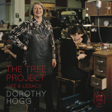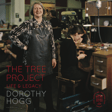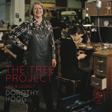
The Tree Project: Julia Keyte
Julia Keyte is a very experienced designer and academic, whose career has encompassed teaching, leadership, research and practice. She oversees the Architecture, Interior Design and Product and Furniture Design programmes at Bath Spa University, leading a group of talented designers embedding inventive, collaborative curriculums grounded in active and hands-on learning.
She has been leading and teaching on undergraduate and postgraduate programmes in design and craft since 2004, including BA (Hons) Product and Furniture Design at Bath Spa University, and BA (Hons) Jewellery and Metalwork at Sheffield Hallam University.
Julia graduated from Edinburgh College of Art in 1998. She also has an MFA in Product Design from the Sandberg Institute in Amsterdam (2003), from a department that embraced cross-disciplinary design. During this period her work was nominated for the first Dutch Design Prize.
During her time as Head of Jewellery & Silversmithing at Edinburgh College of Art, renowned jeweller and educator Dorothy Hogg MBE inspired students in the workshop and beyond. For more information on Dorothy Hogg, the project and participants, visit: www.scottishgoldsmithstrust.org/tree-project.
Hosted by Ebba Goring
Edited & Produced by Eda Obermanns
Cover Image by Shannon Tofts
Music: Precious Memories by Shane Ivers - https://www.silvermansound.com


